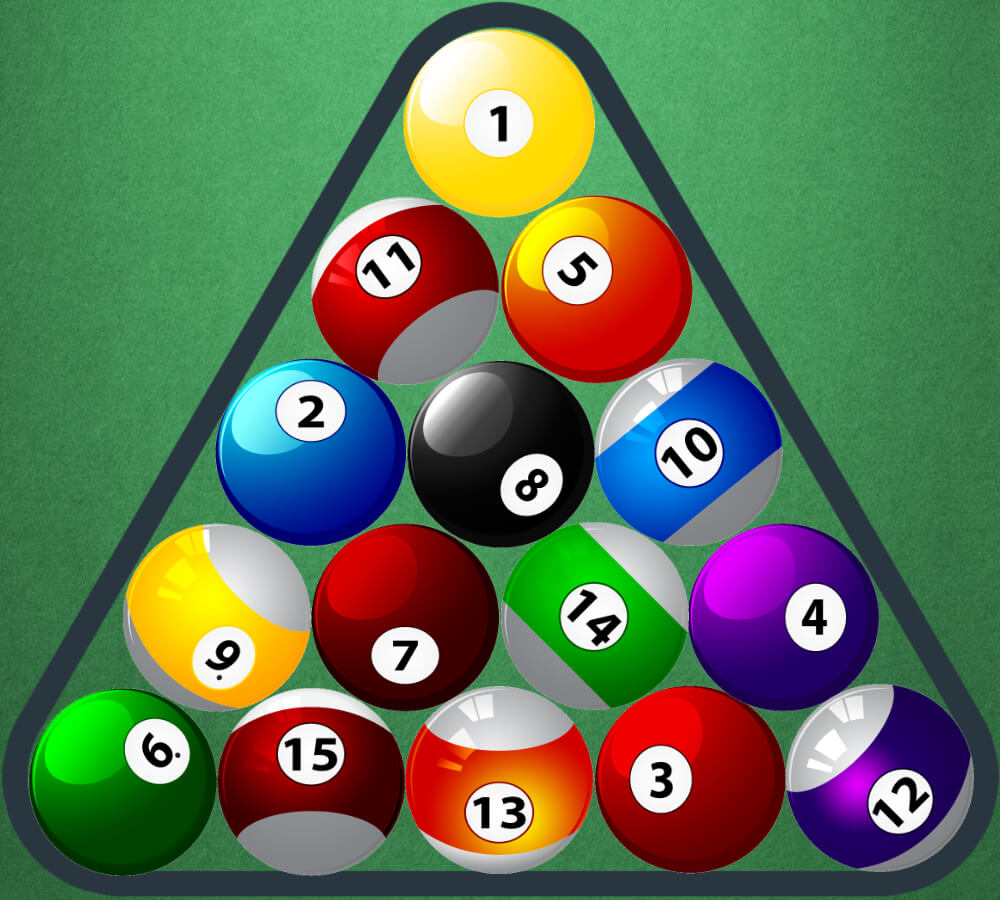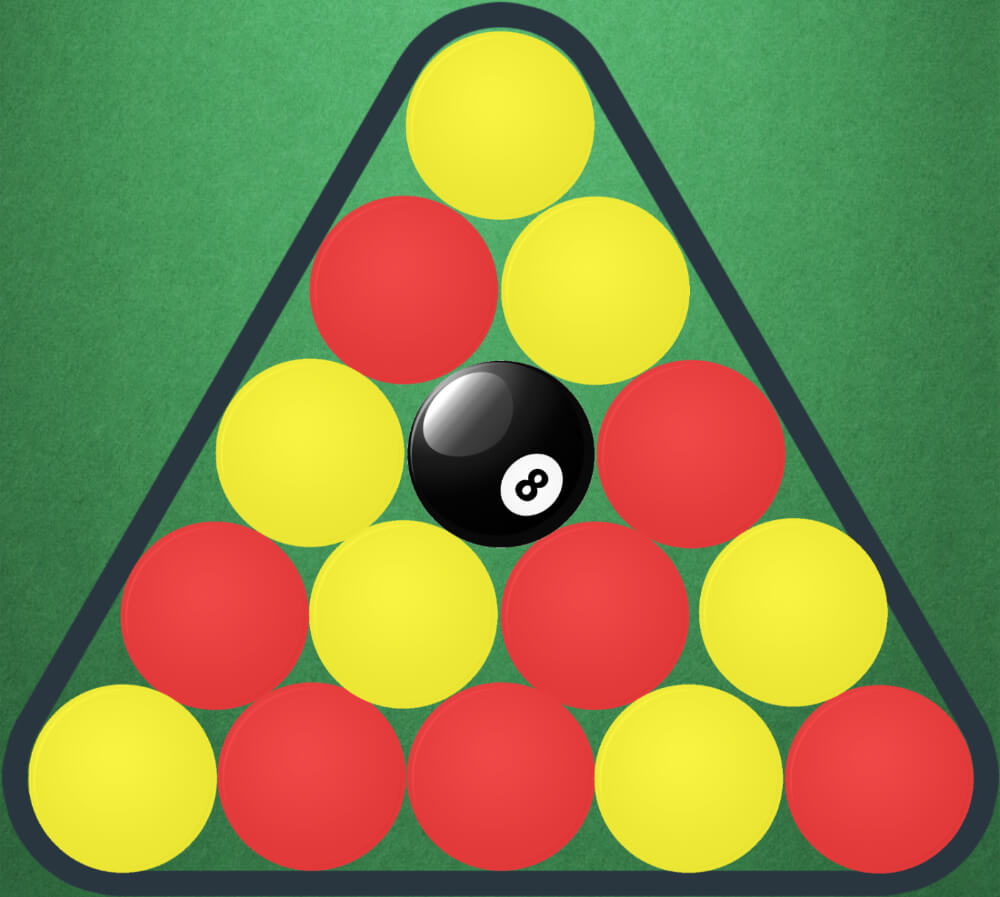Mastering Pool Racking: Your Guide To Perfect Setup!
Is there more to racking pool balls than meets the eye? Mastering the art of racking, a seemingly simple task, is actually a crucial skill that separates casual players from seasoned pool sharks.
The world of billiards, a diverse realm encompassing numerous pool games, each with its unique set of rules and intricacies, often begins with one fundamental action: racking the balls. This seemingly simple act, the arrangement of billiard balls on the table before the game commences, is, in fact, the genesis of every match. While the basic definition of "racking" remains consistent across various billiard games, the actual process of racking, the specifics of how the balls are arranged, can vary considerably from game to game.
Before delving into the nuances of racking, it's important to understand the essential components needed to play. These include a standard pool table, a cue ball, a rack either a triangle or diamond-shaped rack, and a set of pool balls. The size and type of the rack often depend on the particular game being played. For instance, the triangle rack, a classic shape, is commonly used for games like Eight-Ball, while a diamond rack is often employed in games like Nine-Ball.
The triangle racks contain inner measurements of approximately 11.25 inches by 10 inches, while the diamond ones measure roughly 6.75 inches by 10 inches. These dimensions help ensure the balls are positioned correctly for a fair and balanced start. Regardless of the rack's shape, the primary goal is to create a tight arrangement of the balls, a compact formation designed to maximize the chances of a good break.
Racking pool balls may appear simple, but as you play the game, you realize there's an art to it that separates the casual players from the professionals. Creating a tight rack is essential. The tighter the rack, the better the chances of a successful break, and ultimately, a winning game.
Consider the popular game of Eight-Ball, played on pool tables across the country. The classic triangular rack shape is designed to hold and organize the balls in a compact formation. In this game, players must strategically pocket their assigned ball group solids or stripes before sinking the 8-ball to win. Before the game starts, the cue ball rests in the designated "cue ball spot." The one ball rests on the foot spot of the pool table, and the rack is placed behind the one ball. The other balls are arranged in a random order, ensuring a tight rack.
The aim is to create a tight rack by ensuring the balls are touching each other, minimizing any gaps. This is best achieved by firmly pressing the rack against the balls and tapping them in place, before removing it. A tightly racked set of balls leads to more forceful breaks, which can send the cue ball careening across the table, making it harder for your opponents to take the upper hand.
The game of Nine-Ball is another popular variation that demands skillful racking. In nine-ball, the object of the game is to legally pocket the balls in ascending numerical order. When racking for nine-ball, a diamond-shaped rack is used, with the 1-ball placed at the head spot (the table's foot spot) and the 9-ball placed in the center of the rack. The remaining balls are placed in a random order, as long as the 1-ball is in front and the 9-ball is in the center.
The foot spot, located at the foot of the table, serves as the primary spot for placing the balls before the game. It's where the one ball is placed, and then the rack is arranged behind it, creating that perfect triangle. The break shot begins the game, with players aiming to disperse the balls across the table and gain an advantageous position.
Rotation, also known as rotation pool or 61, requires a standard pool table, cue ball, and rack. Players must pocket the balls in numerical order. This demands solid cue ball control and skilled position play. In rotation, players don't have a set group of balls like stripes or solids; they must strategically pocket the balls in sequence.
Straight pool demands similar strategies. When racking pool balls for straight pool, a triangle rack is used. Key factors in straight pool racking include creating a tight rack to maximize the chances of a good break shot. During the break, the first player aims to pocket the balls and, most importantly, secure a good position for the cue ball to control subsequent shots.
Pattern racking, though not always permitted in every competition, allows a player to strategically place balls for a successful break. This is particularly relevant in games where the break can significantly impact the game's flow. Such strategic placement can offer an advantage. The APA (American Poolplayers Association), BCA (Billiards Congress of America), and BAR (Billiard Association of Reno) regulations often provide guidelines for racking, ensuring fair play and standardized setups.
Racking the balls correctly is fundamental to the game of pool. It sets the stage for the game, impacts the break, and significantly influences the game's progression. It is a skill that can be honed with practice and a willingness to learn the nuances of each game.
| Feature | Details |
|---|---|
| Objective | To arrange billiard balls on the pool table before a game. |
| Tools Needed | Pool table, cue ball, rack (triangle or diamond), and a set of pool balls. |
| Importance | Ensures a fair start, influences the break, and impacts the game's progression. |
| Games with Specific Racking Rules | Eight-Ball, Nine-Ball, Rotation, Straight Pool, and many others. |
| Racking Technique | Varies depending on the game, with emphasis on creating a tight rack. |
| Impact of Racking | Directly affects the break shot and subsequent gameplay. |
| Key Factor | A well-executed rack enhances the chances of a successful break and game control. |
| Regulation guidelines | APA, BCA, and BAR regulations provide standardized setups for fair play. |
| Practice | Constant practice improves the skill, and the overall gameplay |
| Example | In Eight-Ball, the rack is triangular, with the 8-ball in the center |
For detailed information on the rules and techniques of racking pool balls, consult the official BCA website: Billiards Congress of America.



Detail Author:
- Name : Aliyah Flatley MD
- Email : elena93@rutherford.biz
- Birthdate : 1983-05-23
- Address : 388 Dale Trafficway Apt. 662 South Amaratown, SD 13418
- Phone : +19093976714
- Company : Maggio and Sons
- Job : Air Crew Member
- Bio : A dolor sint doloremque. Laboriosam rerum et aut cupiditate. Rerum quaerat fuga commodi nemo quia et ipsam. Autem aperiam sed doloremque eos.